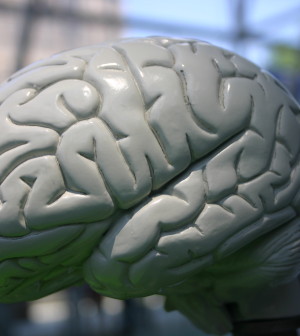- Skip Storing This Everyday Product in the Fridge Door
- Green Tea + B3 Pairing May Boost Brain Health
- Navigating Your Midlife Crisis: Embracing New Possibilities
- City Raccoons Showing Signs of Domestication
- Mapping the Exposome: Science Broadens Focus to Environmental Disease Triggers
- One Week Less on Social Media Linked to Better Mental Health
- Your Brain Changes in Stages as You Age, Study Finds
- Some Suicide Victims Show No Typical Warning Signs, Study Finds
- ByHeart Formula Faces Lawsuits After Babies Sickened With Botulism
- Switch to Vegan Diet Could Cut Your Greenhouse Gas Emissions in Half
Study Sheds Light on Link Between Pesticides, Parkinson’s


Researchers have identified a genetic mutation that increases the risk of Parkinson’s disease linked to pesticides.
The gene mutation causes nerve cells that produce a substance called “dopamine” to lose their protection from pesticide damage. The body uses dopamine to send messages to the part of the brain that controls movement and coordination.
Parkinson’s disease — which causes movement problems such as stiffness, tremors and slurred speech — occurs when nerve cells in the brain don’t produce enough dopamine.
The study is the first “to show that a genetic mutation combined with exposure to pesticides creates a ‘double-hit’ scenario,” by disabling specific pathways, which then leads to nerve-cell death, study senior author Dr. Stuart Lipton, professor and director of Sanford-Burnham Medical Research Institute’s Center for Neuroscience, Aging, and Stem Cell Research, said in an institute news release.
Prior to this research, the suspected link between pesticides and Parkinson’s disease was based mainly on animal research and studies that found an increased risk of Parkinson’s disease among farmers, rural populations and others exposed to agricultural chemicals.
The study was published online Nov. 27 in the journal Cell.
While these findings clearly show the relationship between a gene mutation, the environment, and the damage done to dopamine-producing nerve cells, other mutations and pathways could be important influences as well, the researchers noted.
The investigators plan further research to learn more about how genes and environmental factors interact to contribute to Parkinson’s and other neurodegenerative diseases such as Alzheimer’s and amyotrophic lateral sclerosis (Lou Gehrig’s disease).
“In the future, we anticipate using the knowledge of mutations that predispose an individual to these diseases in order to predict who should avoid a particular environmental exposure. Moreover, we will be able to screen for patients who may benefit from a specific therapy that can prevent, treat or possibly cure these diseases,” Lipton said.
More information
The U.S. National Institute of Neurological Disorders and Stroke has more about Parkinson’s disease.
Source: HealthDay
Copyright © 2025 HealthDay. All rights reserved.










